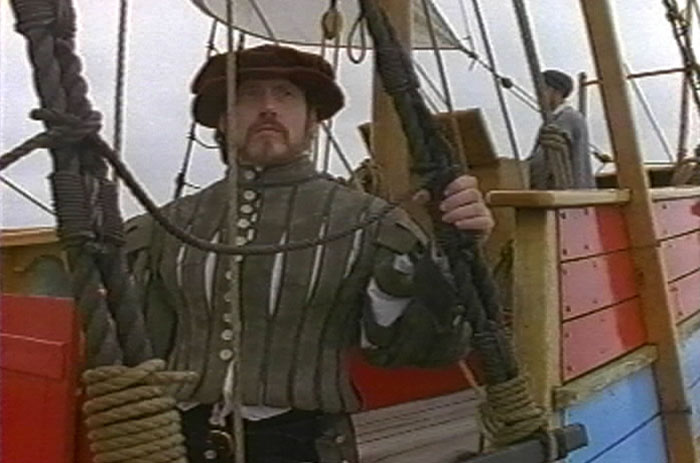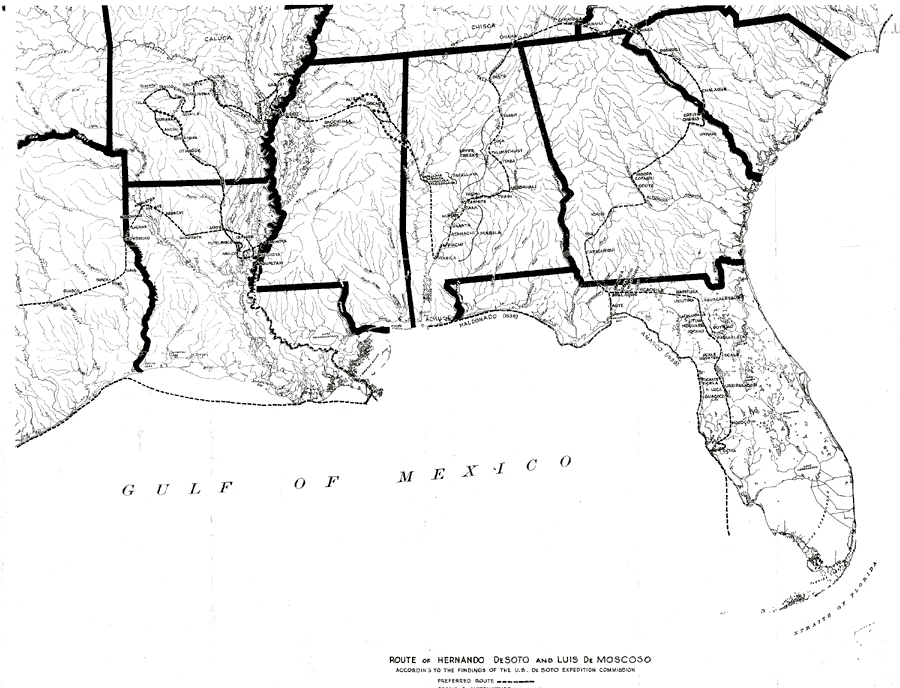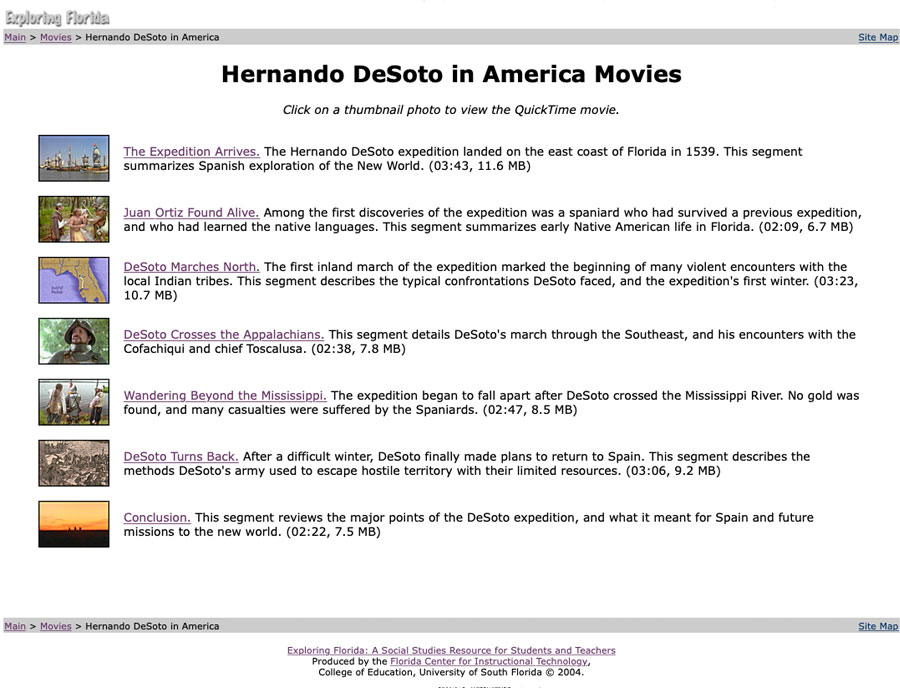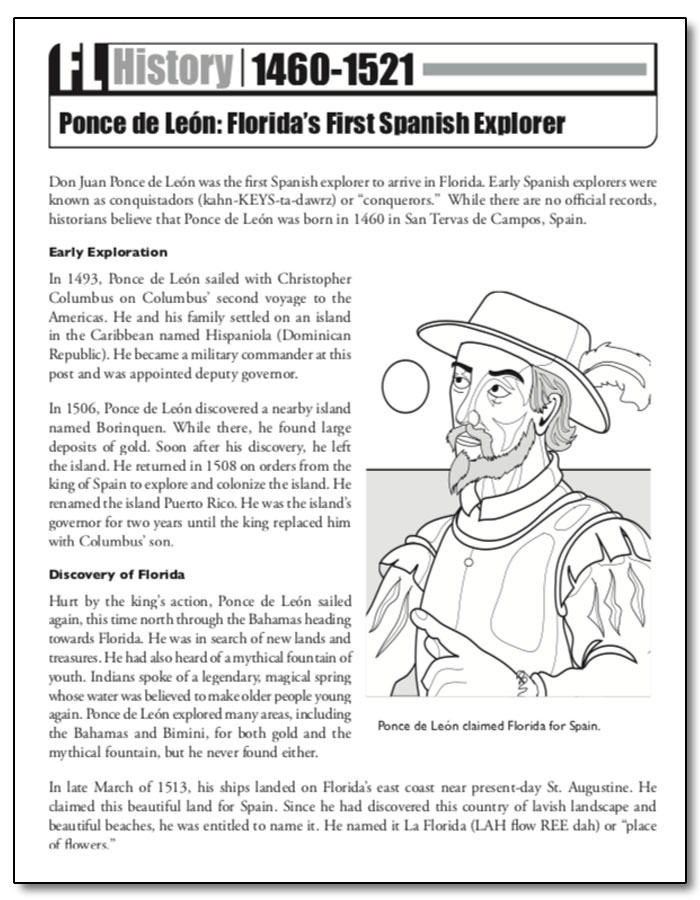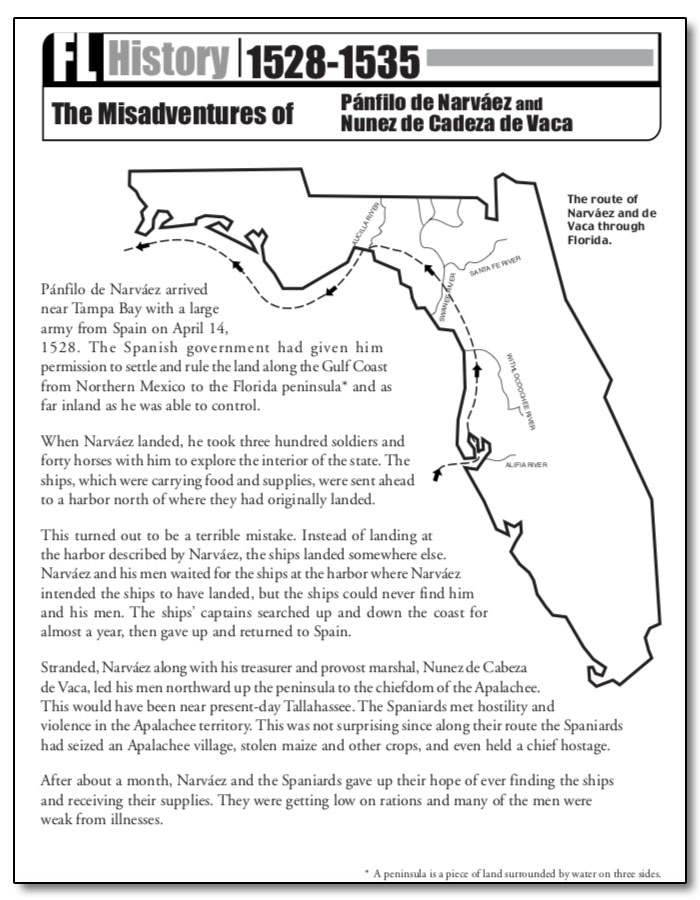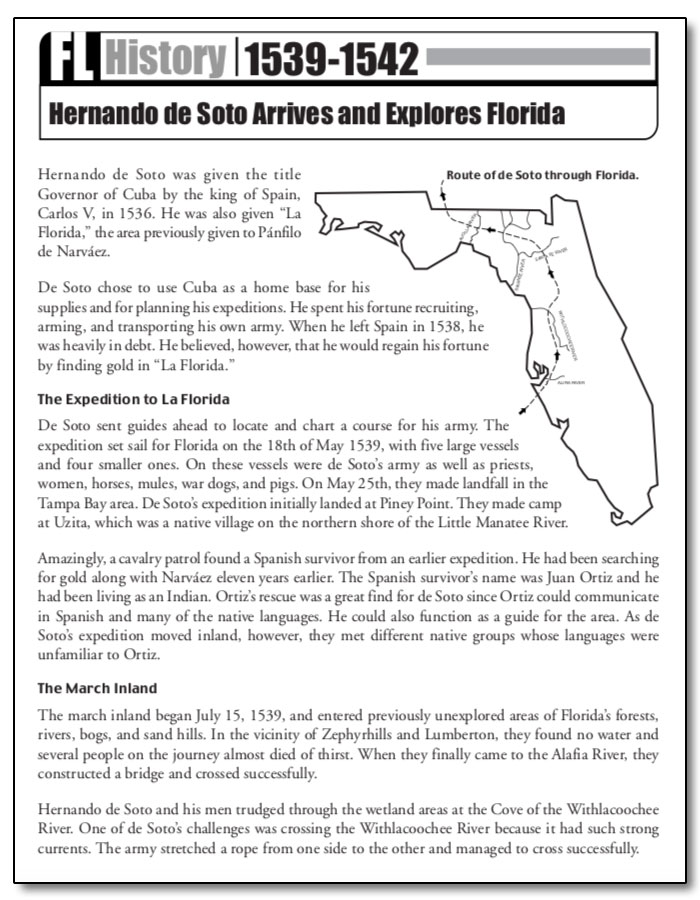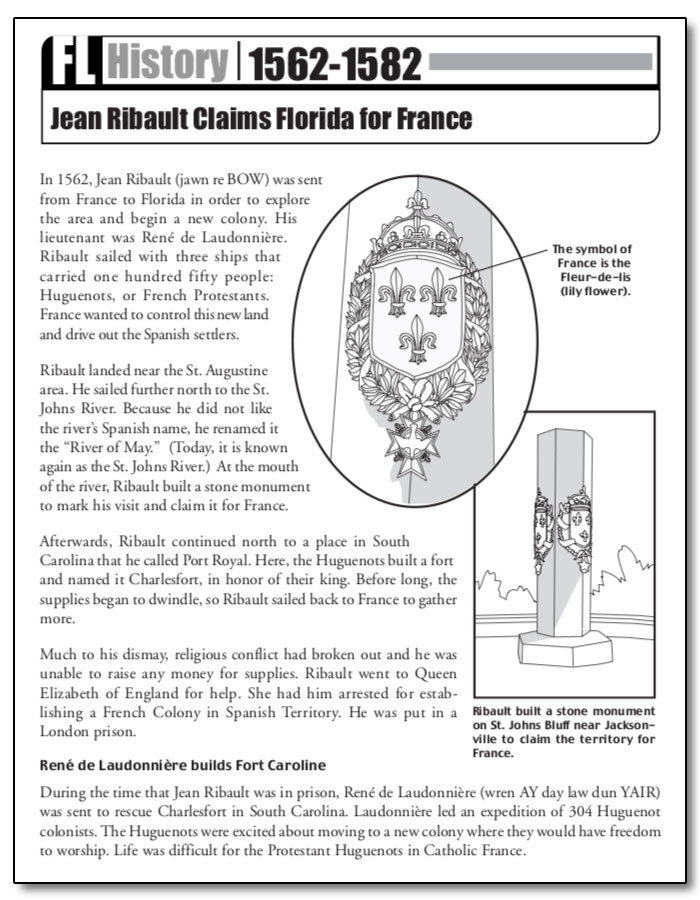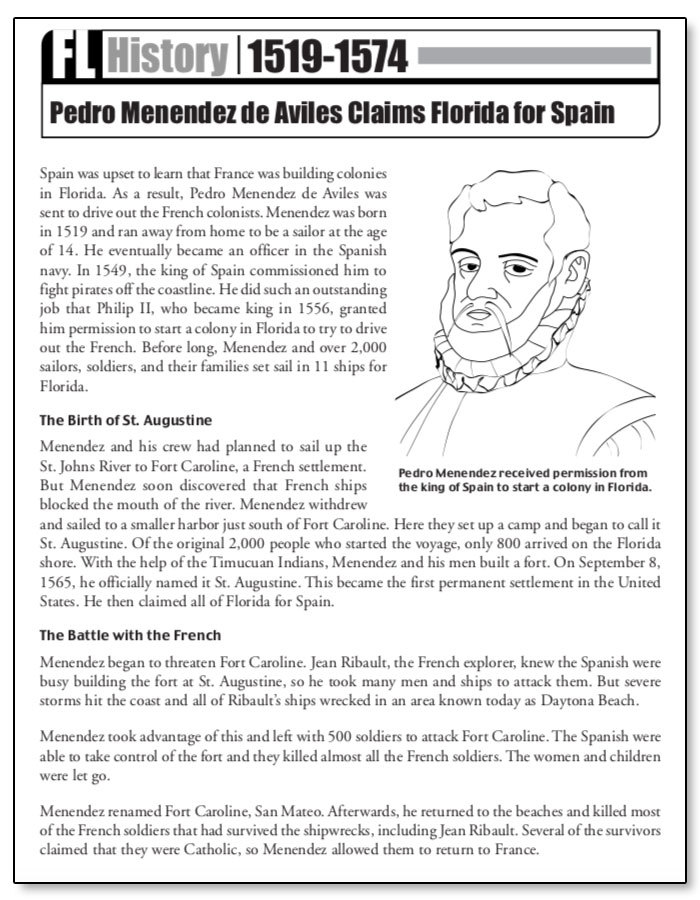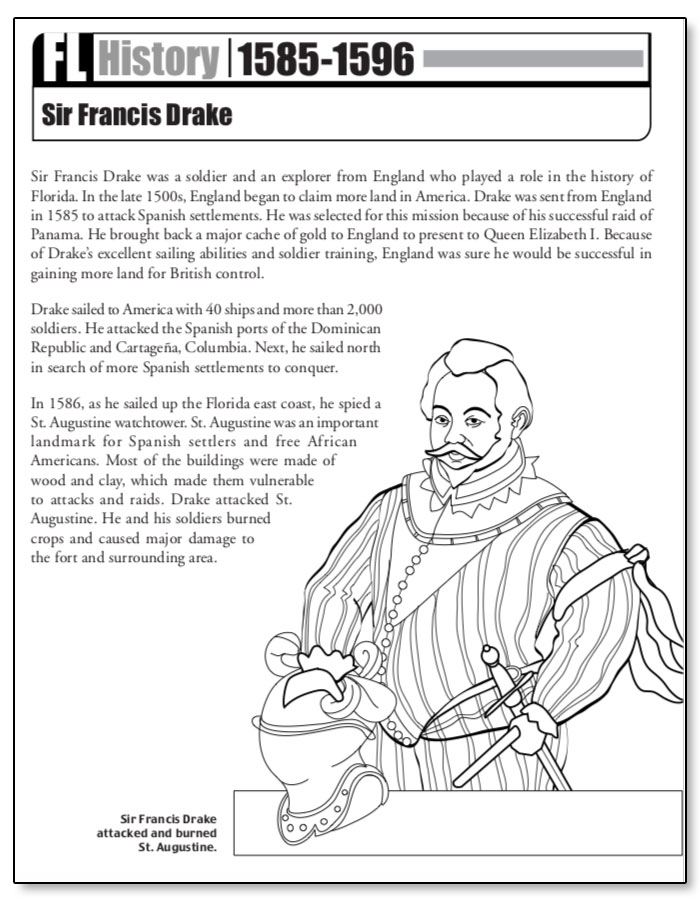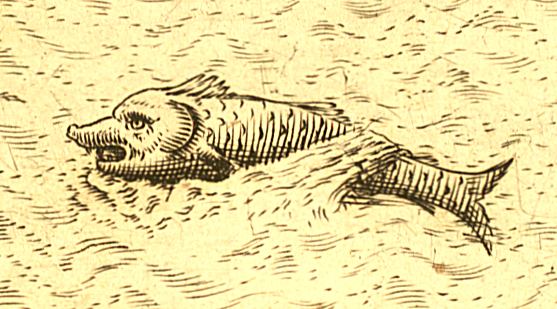What motivated explorers to take the long, hard journey to Florida?
In a trace-based case, begin with a trace of history, like an artifact, photo, painting, or other visual text. Then, use a variety of sources to trace the historical evidence, using critical questioning.
In step 1, begin with a historic engraving by Jacques LeMoyne, the first artist to visit the new world. This trace-based case is focused on the following question: What motivated explorers to take the long, hard journey to Florida?
Step 1: Descriptive Questions. We begin with some descriptive questions. These evidence-based questions provide background information to help students contextualize. However, rather than assigning these questions, work on them together with some group activities that involve a variety of sources, including: artifacts, photos, paintings, maps, charts, graphs, and written primary and secondary sources. First, provide a trace of something from the past, like an artifact.
Then ask the following questions using the artifact and caption:
- What kind of image is this?
- What do you see in the image?
- Who created the image?
- When was it created?
- Where were the explorers?
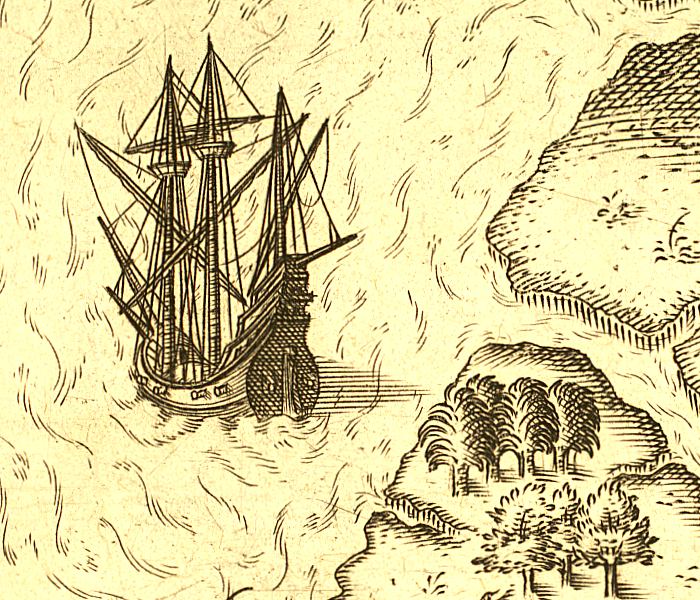
Engraving by Theodor de Bry depicts the arrival of the French explorers to the new world. De Bry based his engravings on sketches or descriptions of Florida by Jacques LeMoyne, the artist who sailed with Rene de Laudonniere, a French explorer, in 1564. Le Moyne charted the coastline of North Florida and the recorded lives of the Timucua tribe.
The Exploring Florida website contains 40 of de Bry’s full-plate engravings, as well as hundreds of detail views. The following are just a few of the images available there.
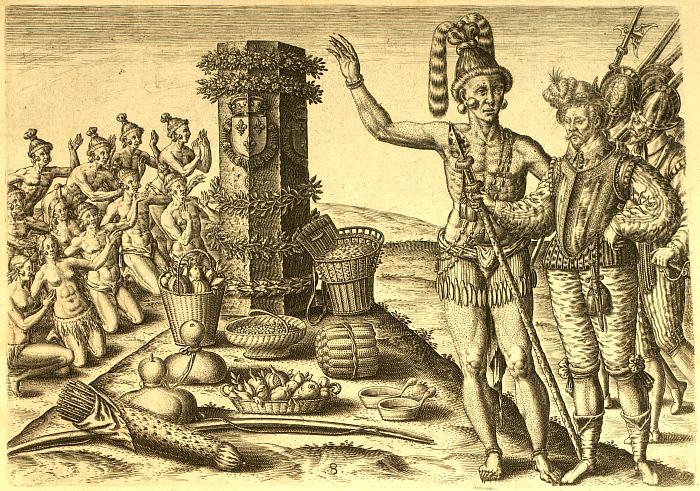

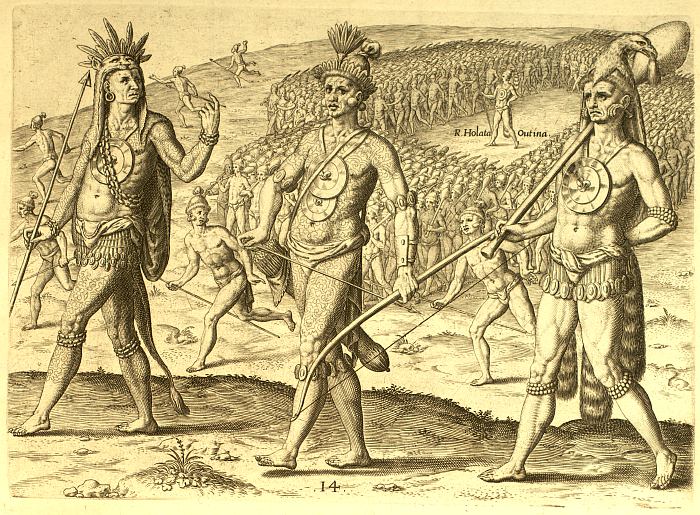
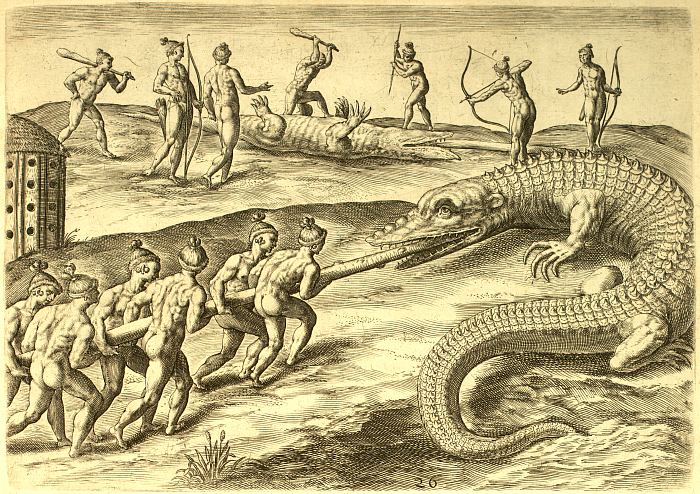

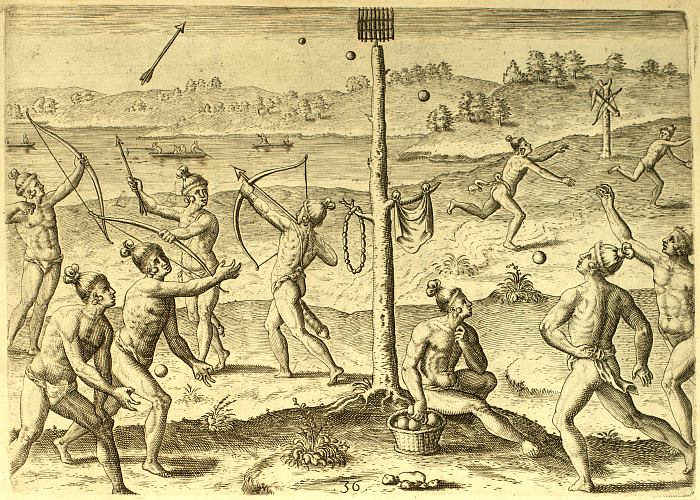
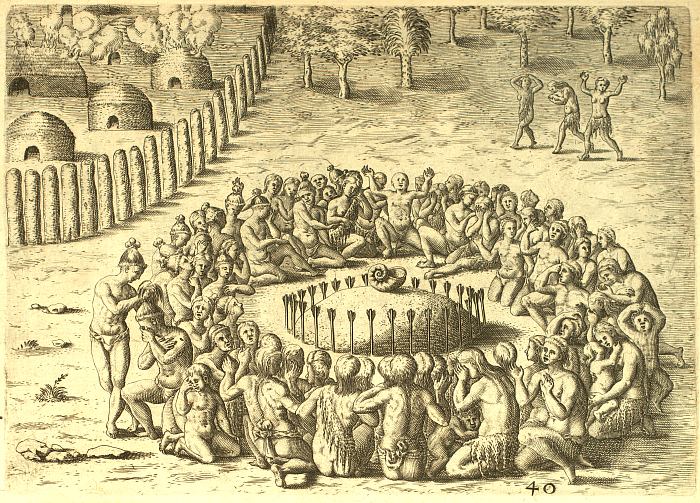
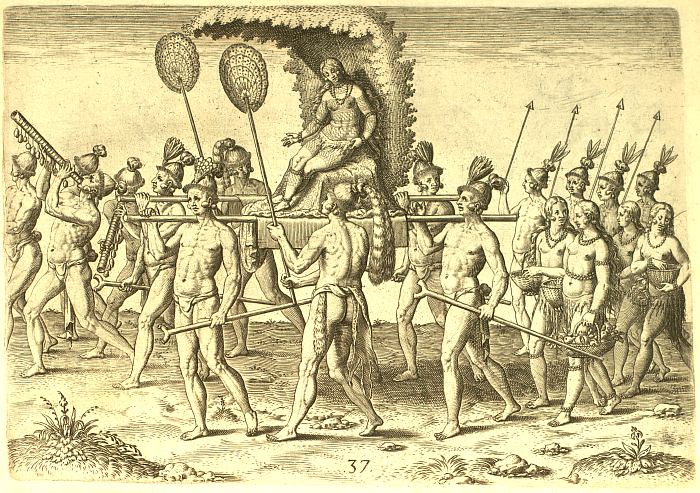
Ask some evidence-based close-ended questions that can be answered by searching for facts within a variety of sources, such as: artifacts, photos, illustrations, and paintings.
- Ask a what question about the type of source: What is this? (Guide the students from identifying this as a drawing, to discussing how to create an engraving.)
- Ask a what question about the image: What do you think is happening in this image?
- Tell students to use the caption to answer:
- Who created the image?
- Where were they?
- Now show the image below. Ask students what is happening, based on the image and caption.
An actor portrays a Spanish explorer, Hernando DeSoto on a replica Spanish ship.
Photo credit: Screen capture taken in 2004 from “Hernando DeSoto in America.” Original video provided to FCIT courtesy of the DeSoto National Memorial.
$$$ add questions about this photo.
A map showing the route of Hernando De Soto and Luis De Moscoso according to the findings of the U.S. De Soto Expedition Commission, 1939.
Seven segments of the video, “Hernando DeSoto in America” provided by the DeSoto National Memorial.
Then, using the following resources, have students conduct a jigsaw where groups read different texts to answer the following descriptive questions:
- Who were some of the Florida explorers?
- What motivated them to come?
- When did they arrive in Florida?
- Where did they travel?
Next, you want to help your students develop deeper analysis questions.
You may also introduce additional resources.
Step 2: Analysis Questions. Analysis part 1 begins with why and how questions, which explore the relationship of the parts to the whole.
How did the explorers travel to the land that became Florida? First make a prediction based on the type of transportation that was available at the time. Then, read the texts to find the answers.
Why did they make the long and dangerous journey to Florida?
Additional Resources: You may want to share additional maps.
Step 3: Evaluation and Extension Questions. Evaluation questions considers implications, solutions, conclusions, or recommendations:
What if? So what? What now? and What next?
What happened to the native people when the explorers arrived?
What if they had never come?
Encourage students to ask more questions:
So what?
What now?
What next?
Then, as an extension, provide two LeMoyne engravings of sea monsters. Why would someone documenting history would provide illustrations of sea monsters. What do you think inspired these illustrations?
Another extension is to have students investigate the Le Moyne engravings. There is some controversy over the authorship and authenticity of the depictions.
Florida History: DBQs and Text Sets
Dr. Deborah Kozdras has worked with students from K-20 and now provides professional development and creates curriculum for K-12 educators at the University of South Florida Stavros Center.
FCIT Newsletter
Each month FCIT publishes a newsletter with short articles on teaching and learning with technology, using digital content in the classroom, and technology integration. Subscribe today! The subscription form will open in a new window. When you have subscribed, you can close the new window to return to this page.

